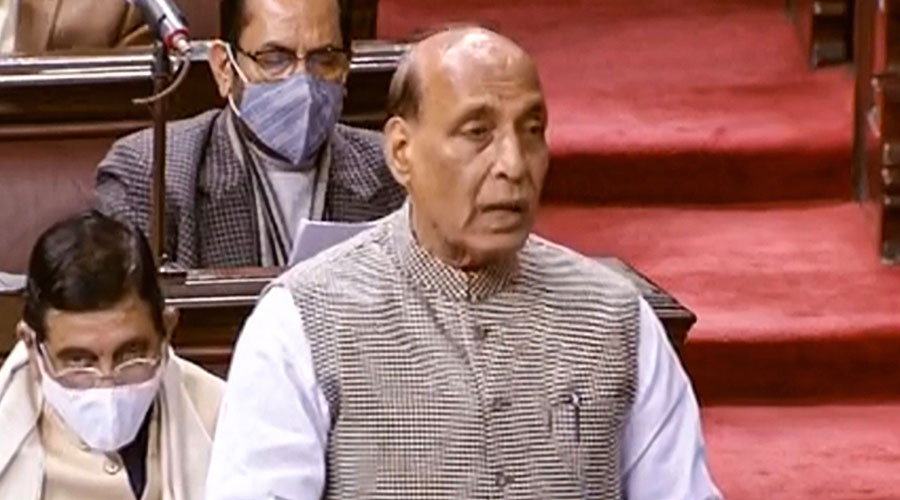Military veterans on Friday questioned the government’s “concessions” in agreeing to create a 10km-wide, demilitarised buffer zone within India-claimed territory in eastern Ladakh as part of the agreement with China to disengage troops from the Pangong Lake’s north and south banks.
They said India had committed a “big blunder” by not forcing China to agree to simultaneous disengagement from the Depsang Plains, which is operationally critical for the Indian Army and where the Chinese are said to be entrenched 18km inside India-claimed lines.
Their expressions of concern came on a day Rahul Gandhi accused Prime Minister Narendra Modi of ceding Indian land to the Chinese — an allegation a defence ministry statement denied without naming anyone.
During the bilateral disengagement from the Galwan Valley last summer, too, veterans had expressed dismay at India agreeing to retreat from held positions to create a buffer zone within territory it claims.
“India agreeing to retreat from Pangong Lake areas and create a buffer zone within its territory has serious implications,” a former lieutenant general told The Telegraph.
“This is a big blunder, considering the buffer zone has been created without restoring the April 2020 status on the Depsang Plains. Does that mean we are giving legitimacy to China’s claim over the Pangong Lake areas?”
Retired Colonel Ajai Shukla tweeted: “Indian, Chinese troops start disengaging in Ladakh’s Pangong sector. A buffer zone separates the two sides — a 10-km stretch between Finger 3 and Finger 8. Indian Army has patrolled this area since the 1962 Sino-Indian war but now cannot enter the zone.”
India claims territory till Finger 8 on the Pangong Lake’s north bank but the Chinese have advanced 8km up to Finger 4 from their erstwhile position at Finger 8.
Under the disengagement agreement, the Chinese would return to the east of Finger 8 and the Indian troops will reciprocate by pulling back to their permanent base near Finger 3. Neither side will patrol the buffer zone till all the modalities are worked out at operational and diplomatic levels.
The government has not given details of the disengagement process relating to the lake’s south bank, where India had captured key heights — the Kailash Range — last September.
The Congress has accused the government of agreeing to withdraw troops from their vantage position on the Kailash Range that overlooks the Pangong Lake’s south bank. Friday’s defence ministry statement did not comment on this charge.
Sources in the security establishment said that during the nine rounds of military talks, China had been adamant about not proceeding with the disengagement talks until India had agreed to vacate the Kailash Range.
There’s no clarity on disengagement from the Depsang Plains and other friction points, such as Gogra and Hot Springs where the Chinese have occupied India-claimed territory.
Shukla contrasted India’s firm stand against Pakistan over Siachen with its capitulation to China.
“When Pak said: ‘Lets demilitarise Siachen now, we can keep discussing Kashmir later’, India rightly said no! Siachen is a part of the Kashmir dispute,” he tweeted.
“But when China said: ‘Lets demilitarise Pangong now, we can discuss Depsang & Gogra later’, India has blundered in accepting.”
Shukla added: “Delhi’s errors: 1. Vacating Kailash Range — our best bargaining chip — in the 1st settlement. Having got what it wanted right at the outset, China has zero interest in further talks. 2. Not forcing China to include Depsang — our biggest vulnerability — in the 1st settlement.”
Friday’s defence ministry statement said “outstanding issues” like the Depsang Plains, Gogra and Hot Springs “are to be taken up within 48 hrs of the completion of the Pangong Tso disengagement”.
But a former army commander stressed that the Depsang Plains were too important to be held back for later.
“It’s incomprehensible that India entered into an agreement with China without finalising the disengagement process from the Depsang Plains. Why the tearing hurry?” he said.
He said that control of Depsang would allow China to threaten the Indian strategic airfield at Daulat Beg Oldie, located at an altitude over 16,000 feet. “The DBO airstrip was built after the 1962 war to check Chinese incursions,” he said.
The airstrip lies near the newly built and strategic Darbuk-Shyok-DBO Road that runs parallel to the LAC, meandering through elevations between 14,000 feet and 16,000 feet.
The road connects Leh with the DBO at the base of the Karakoram Pass, which separates China’s Xinjiang Autonomous Region from Ladakh. China wants to dominate the road, which India’s army uses to support its soldiers deployed on the LAC.
Another veteran said the disengagement agreement might be based on some kind of “give and take”, given that defence minister Rajnath Singh had mentioned not a word about the LAC status quo being restored to what it was before the May 2020 Chinese incursion.
He added: “The partial disengagement seems to have been necessitated by the harsh climate, with the temperature falling to minus 40 degrees in the higher altitudes where troops of both countries are deployed.”
The veteran said that both sides might be keen to diminish their troop presence and pull back some heavy weaponry considering the hostile weather.
“Disengagement is a long-drawn process. The real test will come in the summer. We have to watch what the Chinese army’s response is over the next few months. They can always return to the no-man’s land between Finger 3 and Finger 8,” he said.










